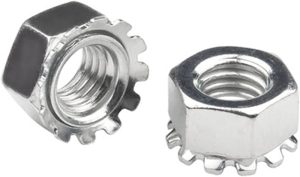Introduction
Rod end bolts are pivotal components in various industrial applications, serving as critical connectors that link different parts of machinery. Their design and functionality ensure the smooth operation of systems, from automotive suspensions to aerospace linkages. Understanding the dynamics of rod end bolts involves delving into their specifications, applications, and the factors influencing their performance.
Specifications and Parameters
Material Quality and Composition
The quality of material used in rod end bolts directly affects their durability and performance. Manufacturers typically use high-grade steel, such as AISI 4140, for its excellent tensile strength and wear resistance. This material ensures the bolt can withstand the rigors of heavy-duty applications, prolonging its lifespan. For instance, a standard rod end bolt made from AISI 4140 can endure tensile stresses up to 655 MPa, significantly higher than bolts made from lesser materials.
Dimensions and Tolerances
Rod end bolts come in various sizes and dimensions to suit different applications. The diameter of these bolts can range from 5 mm for light applications to over 20 mm for heavy industrial machinery. The tolerance levels of these dimensions are meticulously maintained within ±0.01 mm to ensure a perfect fit and prevent any unwanted play or movement that could lead to premature wear or failure.

Performance Factors
Load Capacity and Stress Distribution
The load capacity of rod end bolts is a critical parameter, determining the amount of force they can safely transmit without failure. A typical rod end bolt with a diameter of 10 mm can handle axial loads up to 12,000 N. The design of these bolts distributes stress evenly across the threaded area, minimizing the risk of stress concentrations which could lead to cracking or breaking.
Efficiency and Speed
In dynamic applications, the efficiency and speed of operation are significantly influenced by the choice of rod end bolts. The smooth surface finish and precision threading of high-quality bolts minimize friction, allowing for faster movement and higher efficiency in machinery. This reduction in friction also contributes to lower energy consumption, making operations more cost-effective.
Cost Considerations
Price and Budgeting
The price of rod end bolts varies based on size, material, and specifications. For example, a standard 10 mm diameter bolt made from AISI 4140 steel typically costs around $5 per unit for bulk orders. This cost-effective pricing allows for efficient budgeting in projects, ensuring that high-quality components do not significantly inflate the overall costs.
Lifespan and Value
Investing in high-quality rod end bolts translates to a longer lifespan for the components and the machinery they are part of. This longer lifespan, in turn, reduces the need for frequent replacements, offering better value over time. For instance, while the initial cost might be higher, the extended service life of premium bolts can surpass 5 years in demanding applications, compared to just 1-2 years for lower quality alternatives.
Conclusion
The dynamics of rod end bolts in industrial applications underscore the importance of selecting the right components for the job. By understanding the specific requirements of an application, including load capacity, material quality, and dimensions, engineers can ensure the reliability and efficiency of their machinery. With careful consideration of cost and performance factors, rod end bolts become not just components, but critical investments in the longevity and success of industrial projects.